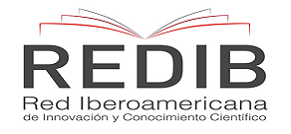Proposal of a protocol for training in cardiopulmonary resuscitation in football
Keywords:
Protocol; cardiopulmonary resuscitation; training; footballAbstract
Objectives: A protocol for training in cardiopulmonary resuscitation in football is proposed. The protocol aims to train professionals in the field of football, as well as assess whether their training has been effective. The final objective is that, if necessary, they are able to carry out an intervention prior to the arrival of specialized care.
Methods: The protocol is aimed at professionals in the field of football, as coaches or assistants, among others. The protocol consists of three phases: 1) Initial evaluation. 2) Training 3) Final evaluation. To obtain a positive evaluation, the participants must obtain a positive evaluation in all the evaluation criteria.
Findings: It is expected that the percentage of participants with a positive evaluation after the training is significantly higher (p <0.05) than the percentage of participants with a positive evaluation before training, a result that will confirm the effectiveness of the proposed protocol for training on cardiopulmonary resuscitation in football.
Conclusions: This protocol could be extrapolated to other sports and situations outside the sports field, such as shopping centers or schools.
Downloads
References
Rojas L, Aizman A, Arab JP, Utili F, Andresen M. Reanimación cardiopulmonar básica: conocimiento teórico, desempeño práctico y efectividad de las maniobras en médicos generales. Rev Med Chile. 2012;140:73-77. http://dx.doi.org/10.4067/S0034-98872012000100010
Nichol G, Thomas E, Callaway CW, Hedges J, Powell JL, Aufderheide TP, et al. Regional variation in out-of-hospital cardiac arrest incidence and outcome. Jama. 2008;300(12):1423–1431. https://doi.org/10.1001/jama.300.12.1423
Berdowski J, Berg R, Tijssen J, Koster R. Global incidences of out-of-hospital cardiac arrest and survival rates: Systematic review of 67 prospective studies. Resuscitation. 2010;81(11):1479–1487. https://doi.org/10.1016/j.resuscitation.2010.08.006
Bossaert L. Perspectiva sobre las guías de reanimación de 2010 del European Resuscitation Council: la necesidad de hacerlo mejor. Revista Española de Cardiología. 2011;64(6):445-450. http://dx.doi.org/10.1016/j.recesp.2011.02.013
Guerra-Martín MD, Martínez-Montilla JM, Amador-Marín B. Necesidades de formación sobre reanimación cardiopulmonar en el ámbito deportivo del fútbol. Enfermería Clínica. 2016;26(3):165-173. https://doi.org/10.1016/j.enfcli.2015.05.004
Castán Redondo LC. Desfibrilador semiautomático en soporte vital. Jaén: Alcala Grupo Editorial; 2007.
Castro Cuervo C, Cuartas Álvarez T, Castro Delgado R, Arcos González P. Conocimientos en soporte vital básico y desfibrilador externo automático de los monitores de centros deportivos de una zona geográfica del Principado de Asturias. Enfermería Clínica. 2015;25(6):344-347. https://doi.org/10.1016/j.enfcli.2015.04.008
López-Messa JB, Martín-Hernández H, Pérez Vela JL, Molina-Latorre R, Herrero-Ansola P. Novedades en métodos formativos en resucitación. Médica Intensiva. 2011;35(7):433-441. http://doi.org/10.1016/j.medin.2011.03.008
European Resuscitation Council. European Resuscitation Council Guidelines for Resuscitation 2015. Resuscitation. 2015;95:1-312.
Drezner JA. Preparing for sudden cardiac arrest - the essential role of automated external defibrillators in athletic medicine: a critical review. Br J Sports Med. 2009;43(9):702-707. http://dx.doi.org/10.1136/bjsm.2008.054890
García Ferrando M, Llopis Goig R. Ideal democrático y bienestar personal. Encuesta sobre los hábitos deportivos en España 2010. Madrid: Consejo Superior de Deportes; 2011.
Downloads
Published
How to Cite
Issue
Section
License
Copyright and Licensing
For all articles published in Atena Journals, copyright is retained by the authors. Articles are licensed under an open access Creative Commons CC BY 4.0 license, meaning that anyone may download and read the paper for free. In addition, the article may be reused and quoted provided that the original published version is cited. These conditions allow for maximum use and exposure of the work, while ensuring that the authors receive proper credit.
Reproducing Published Material from other Publishers
It is absolutely essential that authors obtain permission to reproduce any published material (figures, schemes, tables or any extract of a text) which does not fall into the public domain, or for which they do not hold the copyright. Permission should be requested by the authors from the copyrightholder (usually the Publisher, please refer to the imprint of the individual publications to identify the copyrightholder).
Permission is required for:
- Your own works published by other Publishers and for which you did not retain copyright.
- Substantial extracts from anyones' works or a series of works.
- Use of Tables, Graphs, Charts, Schemes and Artworks if they are unaltered or slightly modified.
- Photographs for which you do not hold copyright.
Permission is not required for:
- Reconstruction of your own table with data already published elsewhere. Please notice that in this case you must cite the source of the data in the form of either "Data from..." or "Adapted from...".
- Reasonably short quotes are considered fair use and therefore do not require permission.
- Graphs, Charts, Schemes and Artworks that are completely redrawn by the authors and significantly changed beyond recognition do not require permission.
Obtaining Permission
In order to avoid unnecessary delays in the publication process, you should start obtaining permissions as early as possible. If in any doubt about the copyright, apply for permission. Atena Journals cannot publish material from other publications without permission.
The copyright holder may give you instructions on the form of acknowledgement to be followed; otherwise follow the style: "Reproduced with permission from [author], [book/journal title]; published by [publisher], [year].' at the end of the caption of the Table, Figure or Scheme.














